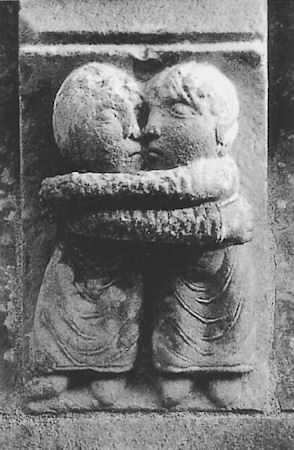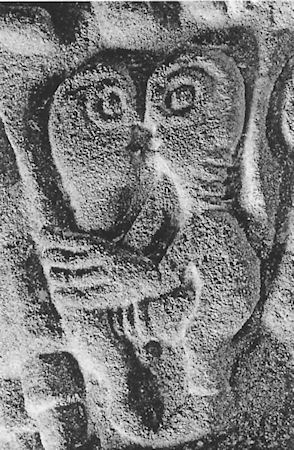
At the beginning of the Norman era the style of architecture that was in vogue has been described as Romanesque, because it copied the patterns and proportions of the architecture of the Roman Empire. The chief characteristics of the Romanesque style were barrel vaults, round arches, thick piers, and few windows. The mission of the sculptor, whose work was seen almost exclusively adorning church buildings, was to educate as well as decorate. He brought Biblical tales and moral lessons to life in stone. Carvings were not just religious, however. Everywhere you look there is evidence of pre-Christian symbology in church sculpture; animals real and fanciful, scenes of everyday life, and the pagan "Green man" peering out from amongst carefully wrought leaves and vines of stone. Sculpture burst forth gloriously in the Romanesque era, with little regard for classical conventions of proportion of figures. Romanesque architecture expands in France through monasteries. Burgundy was the centre of monastic life in France - one of the most important Benedictine monasteries of medieval Europe was the one in Cluny . The pilgrimage also contributed to expansion of this style. Many pilgrims passed through France on their way to Santiago de Compostela.

Facade of St Pierre Aulnay de Saintonge, France

Facade of St Hilarion Perse, Commune d'Espalion, France
This Web Page Created with PageBreeze Free HTML Editor